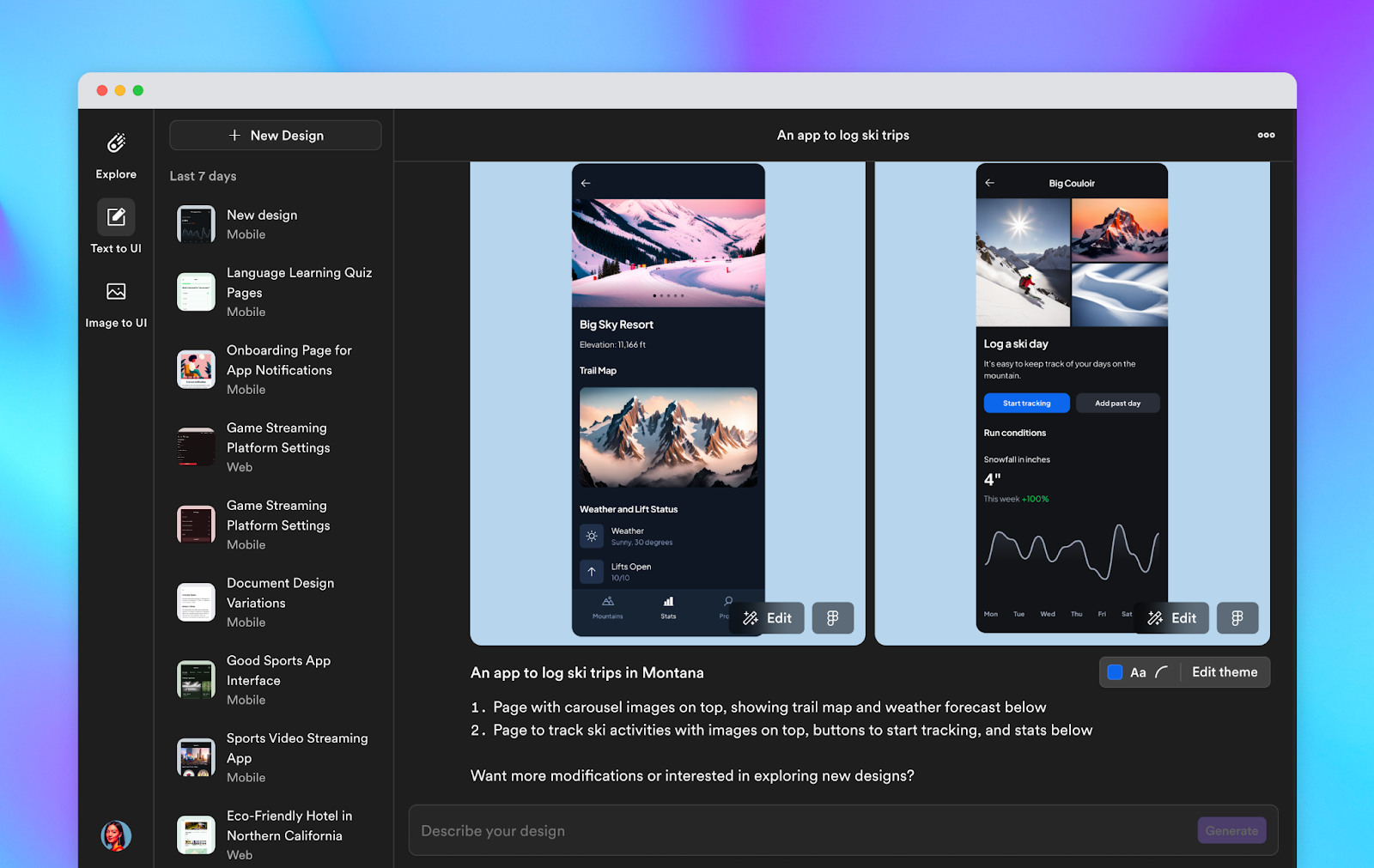
Galileo AI: Complete Buyer's Guide
AI-driven UI generation platform
Galileo AI positions itself as a specialized AI-driven UI generation platform that transforms natural language prompts and visual references into editable designs, targeting the rapidly expanding AI design tools market projected to grow from $5.54 billion in 2024 to $40.15 billion by 2034[43].
Market Position & Maturity
Market Standing
Galileo AI operates within the rapidly expanding AI design tools market, positioned strategically in the UX/UI tools segment that represents the fastest-growing market segment at 28.53% CAGR[43].
Company Maturity
The platform's tiered pricing structure starting at $19/month[48][60][61] demonstrates business model maturity and scalability.
Growth Trajectory
Growth trajectory indicators include the platform's ability to serve the expanding market where design leaders demonstrate 29% adoption rates versus 19.9% among individual contributors[8].
Industry Recognition
Industry recognition includes positive assessments from technology analysts, with Infotech noting 'the speed and context-awareness in UI generation differentiate it from many design AI tools'[78].
Longevity Assessment
Long-term viability appears supported by the platform's positioning within the broader market transformation where 66% of design professionals anticipate fundamental industry changes within five years[50].
Proof of Capabilities
Customer Evidence
Users report that 'Galileo AI's image-to-UI feature is extremely useful' while noting 'Text-to-UI could use work on vague descriptions but remains powerful'[50].
Quantified Outcomes
The platform achieves 10x faster UI generation compared to manual design processes[41][74], with implementations showing 60% reduction in design iteration time[55][57].
Market Validation
Market adoption evidence shows the platform serves organizations within the 65% of businesses using generative AI[49].
Competitive Wins
Competitive performance positions Galileo AI favorably against alternatives. Unlike Uizard, which shows variable accuracy for enterprise applications[51][53], Galileo AI's Image-to-UI capability provides more reliable visual reference conversion.
AI Technology
Galileo AI's technical foundation centers on dual-mode AI generation capabilities that transform both natural language prompts and visual references into functional UI designs.
Architecture
Architecture and deployment follow a cloud-native model that enables rapid scaling without infrastructure investment.
Primary Competitors
Primary competitors include Figma AI, Adobe Sensei, and Uizard.
Competitive Advantages
Competitive advantages center on Galileo AI's dual-mode generation capabilities combining Text-to-UI and Image-to-UI functionality[41][44].
Market Positioning
Market positioning occupies the middle-market segment serving organizations seeking AI-powered design generation without the $250,000-$500,000 implementation investments required for comprehensive enterprise solutions[39].
Win/Loss Scenarios
Win scenarios favor Galileo AI for mid-market design teams requiring rapid prototyping with predictable costs.
Key Features

Pros & Cons
Use Cases
Integrations
Pricing
Featured In Articles
Comprehensive analysis of AI Layout Design Tools for AI Design for AI Design professionals. Expert evaluation of features, pricing, and implementation.
How We Researched This Guide
About This Guide: This comprehensive analysis is based on extensive competitive intelligence and real-world implementation data from leading AI vendors. StayModern updates this guide quarterly to reflect market developments and vendor performance changes.
137+ verified sources per analysis including official documentation, customer reviews, analyst reports, and industry publications.
- • Vendor documentation & whitepapers
- • Customer testimonials & case studies
- • Third-party analyst assessments
- • Industry benchmarking reports
Standardized assessment framework across 8 key dimensions for objective comparison.
- • Technology capabilities & architecture
- • Market position & customer evidence
- • Implementation experience & support
- • Pricing value & competitive position
Research is refreshed every 90 days to capture market changes and new vendor capabilities.
- • New product releases & features
- • Market positioning changes
- • Customer feedback integration
- • Competitive landscape shifts
Every claim is source-linked with direct citations to original materials for verification.
- • Clickable citation links
- • Original source attribution
- • Date stamps for currency
- • Quality score validation
Analysis follows systematic research protocols with consistent evaluation frameworks.
- • Standardized assessment criteria
- • Multi-source verification process
- • Consistent evaluation methodology
- • Quality assurance protocols
Buyer-focused analysis with transparent methodology and factual accuracy commitment.
- • Objective comparative analysis
- • Transparent research methodology
- • Factual accuracy commitment
- • Continuous quality improvement
Quality Commitment: If you find any inaccuracies in our analysis on this page, please contact us at research@staymodern.ai. We're committed to maintaining the highest standards of research integrity and will investigate and correct any issues promptly.